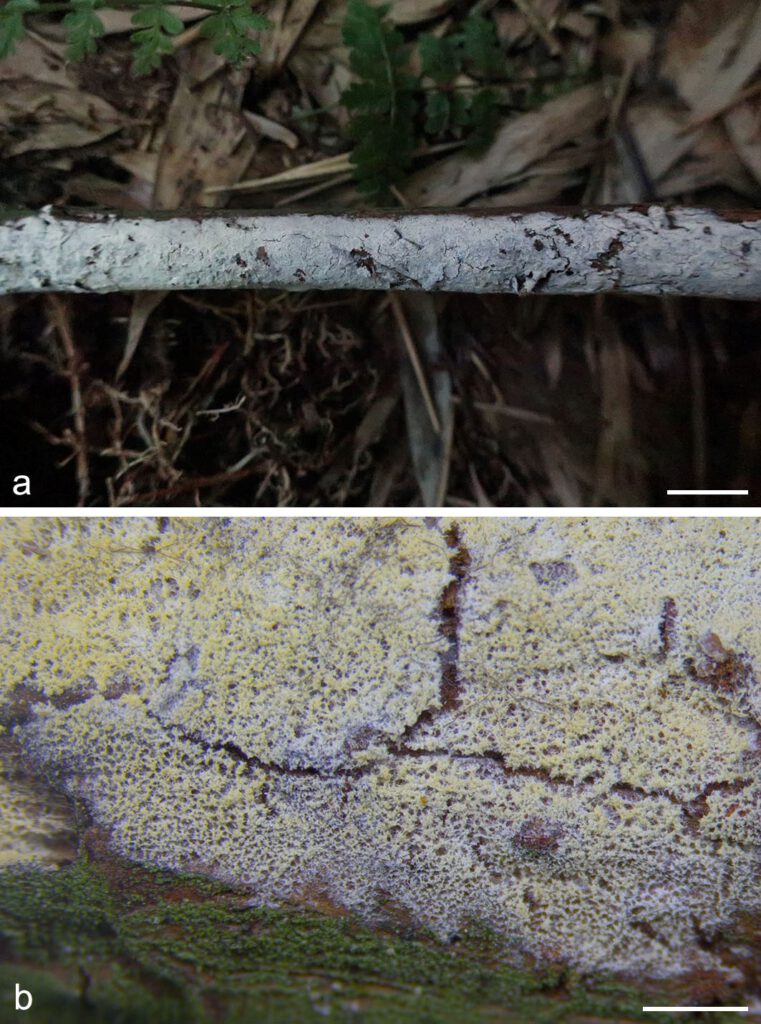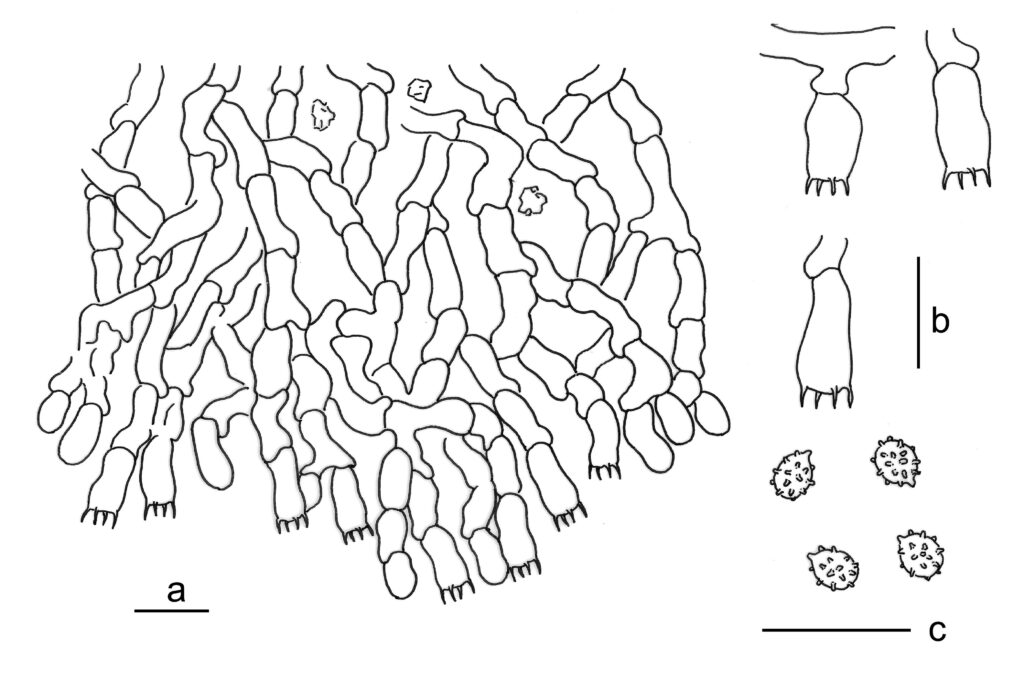Trechispora larssonii S.L. Liu, L.W. Zhou & S.H. He,
MycoBank number: MB 559892; Index Fungorum number: IF 559892; Facesoffungi number: FoF 12872;
Description
Basidiomes annual, resupinate, effused, thin, soft, fragile, easily separated from substrates, up to 15 cm long, 2 cm wide. Hymenophore smooth, farinaceous, white to cream when fresh, cream to buff-yellow with age, finely cracked. Margin thinning out as byssoid, narrow, white to cream. Hyphal system monomitic; generative hyphae with clamp connections. Subicular hyphae hyaline, thin-walled, moderately branched and septate, subparallel, 2.5–5 µm in diam. Subhymenial hyphae short-celled and wide, 3–5 µm in diam, much branched. Cystidia absent. Crystals common, as aggregated rhomboidal flakes. Basidia cylindrical with a slight median constriction, thin-walled, with four sterigmata and a basal clamp connection, 7–13 × 4–5 µm; basidioles in shape similar to basidia, but slightly smaller. Basidiospores ellipsoid, hyaline, thin-walled, verrucose, inamyloid, indextrinoid, acyanophilous, (2.5–)2.8–3.3(–3.5) × (2.5–)2.1–2.8(–3.3) µm, L = 3 µm, W = 2.5 µm, Q = 1.2 (n = 60/2).
Material examined: CHINA, Sichuan, Muchuan County, Qincaiping Nature Reserve, on fallen gymnosperm twig, 17 Aug. 2019, L.W. Zhou, LWZ 20190817-11a (holotype in HMAS).
Distribution: CHINA
Notes: Besides Trechispora minima, which differs by occasional occurrence of crystals and aculeate basidiospores (Larsson 1996), T. larssonii is also similar to T. damansaraensis by smooth and farinaceous hymenophore, but T. damansaraensis differs in slightly narrower generative hyphae in subiculum and subhymenium (up to 4 µm), the occasional presence of crystals, and aculeate, slightly longer basidiospores (3–3.8 µm in length).

Fig. 1. Basidiomes of Trechispora larssonii (LWZ 20190817-11a, holotype). — Scale bars: a = 1 cm; b = 1 mm.

Fig. 2. Microscopic structures of Trechispora larssonii (drawn from the holotype).a. Vertical section of basidiomes; b. Basidia; c. Basidiospores. Scale bars = 10 μm.
